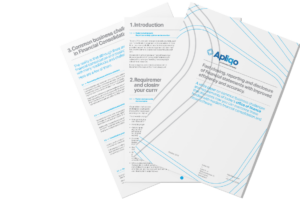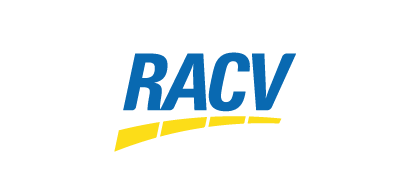
Cash flow management: Optimising it with FP&A — A smarter approach for finance teams
Effective cash flow management is more than just a numbers game — it is a strategic imperative. As companies navigate through economic uncertainties and a
acf domain was triggered too early. This is usually an indicator for some code in the plugin or theme running too early. Translations should be loaded at the init action or later. Please see Debugging in WordPress for more information. (This message was added in version 6.7.0.) in /www/apliqo_676/public/wp-includes/functions.php on line 6131interactive-geo-maps domain was triggered too early. This is usually an indicator for some code in the plugin or theme running too early. Translations should be loaded at the init action or later. Please see Debugging in WordPress for more information. (This message was added in version 6.7.0.) in /www/apliqo_676/public/wp-includes/functions.php on line 6131members domain was triggered too early. This is usually an indicator for some code in the plugin or theme running too early. Translations should be loaded at the init action or later. Please see Debugging in WordPress for more information. (This message was added in version 6.7.0.) in /www/apliqo_676/public/wp-includes/functions.php on line 6131wp-cerber domain was triggered too early. This is usually an indicator for some code in the plugin or theme running too early. Translations should be loaded at the init action or later. Please see Debugging in WordPress for more information. (This message was added in version 6.7.0.) in /www/apliqo_676/public/wp-includes/functions.php on line 6131
A white paper on common business challenges and requirements of today’s office of finance that discusses how you can overcome these hurdles with modern financial consolidation and close software.
A white paper on common business challenges and requirements of today’s office of finance that discusses how you can overcome these hurdles with modern financial consolidation and close software.

Today’s environment: Report accurately, quicker and more often
—
Today’s CFOs are under pressure to report accurately, quickly and more often to management and stakeholders. At the same time, they are expected to act as a business partner and provide proactive support for senior management decision-making. Their role and the demands placed on CFOs continue to evolve and shift.
Consolidation and consolidated financial reporting can improve finance department efficiency and effectiveness, helping CFOs address the challenge of meeting increasing requirements with often limited resources.
Listed companies and private businesses with multiple entities face many challenges in their financial accounting and reporting.
Who should read this White paper?
—
This white paper is designed to highlight the common pitfalls, challenges and requirements for modern financial consolidation and close solutions and how these can be overcome.
The target audience of this white paper are CFOs, Financial Controllers, Head of Finance and Consolidation as well as people responsible for finance systems (both in Office of Finance or in IT).
Today’s environment: Report accurately, quicker and more often
—
Today’s CFOs are under pressure to report accurately, quickly and more often to management and stakeholders. At the same time, they are expected to act as a business partner and provide proactive support for senior management decision-making. Their role and the demands placed on CFOs continue to evolve and shift.
Consolidation and consolidated financial reporting can improve finance department efficiency and effectiveness, helping CFOs address the challenge of meeting increasing requirements with often limited resources.
Listed companies and private businesses with multiple entities face many challenges in their financial accounting and reporting.
Who should read this White paper?
—
This white paper is designed to highlight the common pitfalls, challenges and requirements for modern financial consolidation and close solutions and how these can be overcome.
The target audience of this white paper are CFOs, Financial Controllers, Head of Finance and Consolidation as well as people responsible for finance systems (both in Office of Finance or in IT).
Faster, more accurate, more efficient,
more complex
—
Organizations that succeed in today’s constantly changing marketplace adapt quickly to new conditions and consciously improve their business processes. Efficient consolidation and reporting ranks high on the agendas of modern CFOs.
The drivers for change are:
Twelve reasons why you should improve
your consolidation and reporting process
—
Among the most important reasons we identified to improve your consolidation and reporting process are the twelve points below:
Faster, more accurate, more efficient,
more complex
—
Organizations that succeed in today’s constantly changing marketplace adapt quickly to new conditions and consciously improve their business processes. Efficient consolidation and reporting ranks high on the agendas of modern CFOs.
The drivers for change are:
Twelve reasons why you should improve
your consolidation and reporting process
—
Among the most important reasons we identified to improve your consolidation and reporting process are the twelve points below:
The reality is that although there are many reasons
to improve financial consolidation and closing process,
organizations are faced with many roadblocks and challenges.
Here are a few of them.
Time and quality issues with data collection
—
Finance organizations faced with time constraints and shorter closing times are often confronted with data quality issues and manual data collection processes. Financial consolidation requires organizations to collect information from individual entities.
Organizations either must wait too long to receive information from each entity, or there are issues with the data or questions that create back-and-forth (often across time zones and in the high-pressure environment of the monthly closing process.)
No access to real-time data
—
Often organizations are faced with non-automated or even manual data gathering processes that are consolidated in spreadsheets. These offline processes do not allow financial controllers to drill-down to root-causes which have been identified in the financial data. Ability to slice-and-dice and drill-down in real-time is not possible due to poor data integration and/or missing multi-dimensional financial reporting solutions being used to consolidate financial data. Less accuracy and ability to analyse issues lead to a longer close process that ultimately is also less efficient.
Manual consolidations and entries
—
Spreadsheet-centric tasks like mapping accounts, applying consolidation rules, or manually making “off-line journal” entries to tie out the close are main drivers for a slow closing process.
Additionally, the need for adjustment entries from local to IFRS or US-GAAP require the ability to journal and track for audit purposes exactly such adjustments made in spreadsheets.
Inter-company reconciliation and eliminations
—
Tracking down detail behind inter-company transactions, balances, currency rates and other factors absorbs too much time.
Matching inter-company balances, transactions and creating eliminations is a major bottleneck in organizations.
Consolidation process control activities
—
Looking up checklists or manually applying control activities in the consolidation process can tie up members of the team.
Following-up on with group-wide entities any matter related to financial closing and consolidation is a labor intensive and time-consuming process.
Business structure change management
—
Adding newly acquired or created entities can take a significant amount of effort, as well as risking the integrity of consolidated reports.
Organizations need flexible, agile software solutions that support ever changing business structures.
Being able to automate equity reconciliation and elimination is often challenged by changing business structures as the current process and systems do not support it.
Consolidated report creation
—
Taking results from the consolidated systems typically means reformatting results or further spreadsheets manipulations.
Having a process and system in place the supports the “last mile” is a challenge on its own.
Changing reporting requirements
—
New regulatory requirements from various governments and international accounting standards often may mean that existing financial consolidation reporting processes fall out of alignment, requiring further manual effort.
The reality is that although there are many reasons
to improve financial consolidation and closing process,
organizations are faced with many roadblocks and challenges.
Here are a few of them.
Time and quality issues with data collection
—
Finance organizations faced with time constraints and shorter closing times are often confronted with data quality issues and manual data collection processes. Financial consolidation requires organizations to collect information from individual entities.
Organizations either must wait too long to receive information from each entity, or there are issues with the data or questions that create back-and-forth (often across time zones and in the high-pressure environment of the monthly closing process.)
No access to real-time data
—
Often organizations are faced with non-automated or even manual data gathering processes that are consolidated in spreadsheets. These offline processes do not allow financial controllers to drill-down to root-causes which have been identified in the financial data. Ability to slice-and-dice and drill-down in real-time is not possible due to poor data integration and/or missing multi-dimensional financial reporting solutions being used to consolidate financial data. Less accuracy and ability to analyse issues lead to a longer close process that ultimately is also less efficient.
Manual consolidations and entries
—
Spreadsheet-centric tasks like mapping accounts, applying consolidation rules, or manually making “off-line journal” entries to tie out the close are main drivers for a slow closing process.
Additionally, the need for adjustment entries from local to IFRS or US-GAAP require the ability to journal and track for audit purposes exactly such adjustments made in spreadsheets.
Inter-company reconciliation and eliminations
—
Tracking down detail behind inter-company transactions, balances, currency rates and other factors absorbs too much time.
Matching inter-company balances, transactions and creating eliminations is a major bottleneck in organizations.
Consolidation process control activities
—
Looking up checklists or manually applying control activities in the consolidation process can tie up members of the team.
Following-up on with group-wide entities any matter related to financial closing and consolidation is a labor intensive and time-consuming process.
Business structure change management
—
Adding newly acquired or created entities can take a significant amount of effort, as well as risking the integrity of consolidated reports.
Organizations need flexible, agile software solutions that support ever changing business structures.
Being able to automate equity reconciliation and elimination is often challenged by changing business structures as the current process and systems do not support it.
Consolidated report creation
—
Taking results from the consolidated systems typically means reformatting results or further spreadsheets manipulations.
Having a process and system in place the supports the “last mile” is a challenge on its own.
Changing reporting requirements
—
New regulatory requirements from various governments and international accounting standards often may mean that existing financial consolidation reporting processes fall out of alignment, requiring further manual effort.
Get in touch today about FP&A and let’s explore its potential at your company together.












We’re proud to have helped these companies plan better.
Get in touch today about FP&A and let’s explore its potential at your company together.












We’re proud to have helped these companies plan better.

Effective cash flow management is more than just a numbers game — it is a strategic imperative. As companies navigate through economic uncertainties and a

There’s a persistent myth that abounds that financial consolidation is merely a checkbox for compliance and a routine set of tasks that happens under dire

In any organisation, the FP&A team is going to be responsible for handling vast amounts of sensitive financial data. From revenue forecasts to strategic planning





Your financial planning and analytics workflows involve various tools and software that each have their own steep learning curves.
@Apliqo 2022 All rights reserved